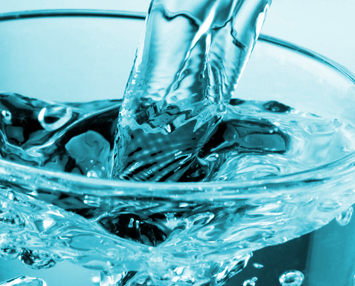New tech for drinking seawater
 Australian researchers say a new technique can deliver safe drinking water using cheap materials and free energy.
Australian researchers say a new technique can deliver safe drinking water using cheap materials and free energy.
Less than 3 per cent of the world’s water is fresh, and due to the pressures of climate change, pollution, and shifting population patterns, in many areas this already scarce resource is becoming scarcer.
But researchers at the University of South Australia say that their new process could eliminate water stress for millions of people.
Their technique can derive freshwater from seawater, brackish water, or contaminated water, through highly efficient solar evaporation, delivering enough daily fresh drinking water for a family of four from just one square metre of source water.
“In recent years, there has been a lot of attention on using solar evaporation to create fresh drinking water, but previous techniques have been too inefficient to be practically useful,” team leader Dr Haolan Xu says.
“We have overcome those inefficiencies, and our technology can now deliver enough fresh water to support many practical needs at a fraction of the cost of existing technologies like reverse osmosis.”
At the heart of the system is a highly efficient photothermal structure that sits on the surface of a water source and converts sunlight to heat, focusing energy precisely on the surface to rapidly evaporate the uppermost portion of the liquid.
While other researchers have explored similar technology, previous efforts have been hampered by energy loss, with heat passing into the source water and dissipating into the air above.
“Previously many of the experimental photothermal evaporators were basically two dimensional; they were just a flat surface, and they could lose 10 to 20 per cent of solar energy to the bulk water and the surrounding environment,” Dr Xu says.
“We have developed a technique that not only prevents any loss of solar energy, but actually draws additional energy from the bulk water and surrounding environment, meaning the system operates at 100 per cent efficiency for the solar input and draws up to another 170 per cent energy from the water and environment.
“We are the first researchers in the world to extract energy from the bulk water during solar evaporation and use it for evaporation, and this has helped our process become efficient enough to deliver between 10 and 20 litres of fresh water per square metre per day.”
The system is built entirely from simple, everyday materials sourced from the hardware store or supermarket, except for the photothermal materials.
Dr Xu says the devices could be deployed in situations where other desalination and purification systems would not be viable.
“For instance, in remote communities with small populations, the infrastructure cost of systems like reverse osmosis is simply too great to ever justify, but our technique could deliver a very low cost alternative that would be easy to set up and basically free to run,” Dr Xu says.
“Also, because it is so simple and requires virtually no maintenance, there is no technical expertise needed to keep it running and upkeep costs are minimal.
“This technology really has the potential to provide a long-term clean water solution to people and communities who can’t afford other options, and these are the places such solutions are most needed.”








 Print
Print